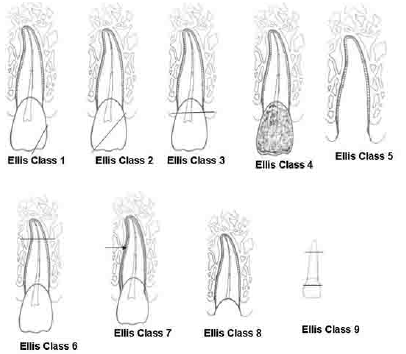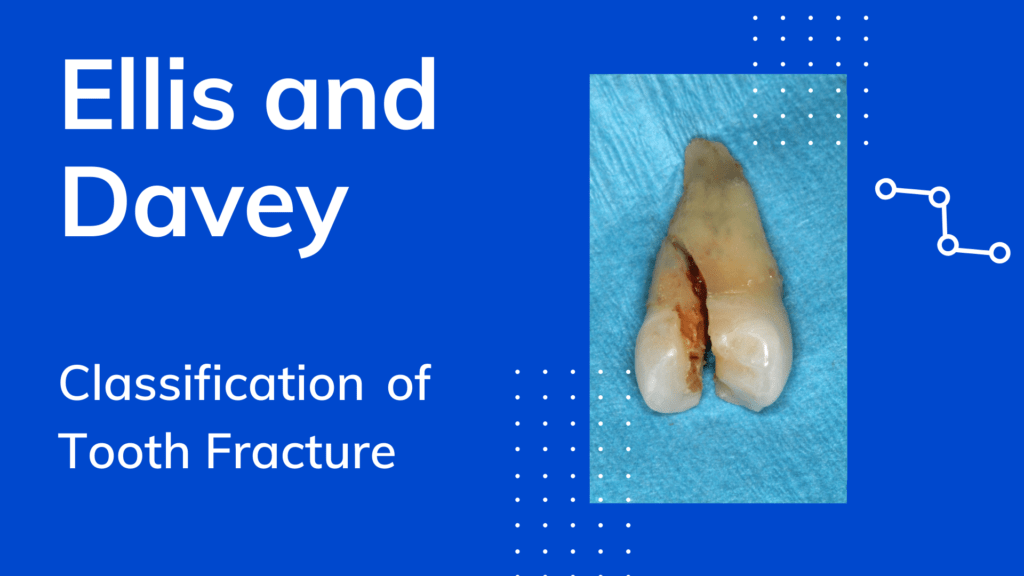In this post we shall learn about the most commonly used tooth fracture classification i.e. Ellis and Davey Classification.
Tooth fractures can occur due to various reasons like trauma, decay, or weak tooth structure. Ellis and Davey in 1970 proposed a classification system for tooth fractures based on the extent of damage to the tooth structure. This classification system is widely accepted and used by dental professionals to determine the severity of tooth fractures and to decide the treatment plan accordingly.
Class 1: Simple fracture of the crown involving little or no dentin
Class 2: Extensive fracture of the crown involving considerable dentin but not pulp
Class 3: Extensive fracture of the crown involving considerable dentin, and exposing the dental pulp
Class 4: The traumatized tooth which becomes nonvital with or without loss of crown
Class 5: Teeth lost as a trauma
Class 6: Fracture of the root with or without loss of crown structure
Class 7: Displacement of the tooth without fracture of crown or root
Class 8: Fracture of the crown en masse and its replacement
Class 9: Traumatic Injury to primary dentition

Ellis Class I fractures involve only the enamel layer of the tooth, which is the outermost layer of the tooth structure. These types of fractures are the least severe and do not involve the sensitive inner layers of the tooth. The treatment for Ellis Class I fractures includes smoothing the rough edges of the tooth and polishing it to prevent further damage to the enamel layer.
Ellis Class II fractures involve the enamel layer and the dentin layer, which is the layer beneath the enamel layer. These types of fractures are more severe than Ellis Class I fractures, and they can expose the sensitive pulp tissue, leading to pain and sensitivity. The treatment for Ellis Class II fractures involves placing a dental filling to restore the lost tooth structure and protect the exposed pulp tissue.
Ellis Class III fractures involve the enamel layer, dentin layer, and the pulp tissue, which is the innermost layer of the tooth structure. These types of fractures are the most severe and require immediate attention to prevent further damage to the tooth and surrounding tissues. The treatment for Ellis Class III fractures involves root canal treatment to remove the damaged pulp tissue and placing a dental crown to restore the lost tooth structure.
That’s it for this post of Ellis and Davey Classification.
Last updated on March 8th, 2023 at 21:41


